I decided to add this page as I think Iranian culture is not much known worldwide because of Iran’s vast diversity in many things which I explain later and limited tourism opportunities. As someone born and raised in Iran, I created this page to introduce some of the delicious or beautiful traditions that many may not have heard of. From the country’s
varied nature and natural resources to its wealth of languages and customs, each region is a unique entity. I should say that it seems impossible to me to even know about different foods, fruits, traditions or many other things in Iran, to make it clear I bring an example, I was 30 years old when I first witnessed the traditional wedding of a village just
three hours from my hometown of Mashhad, which I’d only heard of before, in this village which is considered a close destination people speak Kurmanji and wear their own dresses for weddings and I am sure there are more differences I do not know about yet. You can find photos and details about this experience under the Travelogue tab in Khorasan Razavi page.
Each food I mention here has a different recipe from region to region and of course person to person, so I’ll write the most common ingredients. I have not brought the full cooking instructions as there are so many recipes available online but if anyone is interested I can tell them the recipe I have learned and use. Also, you can find a Persianized variation of international dishes that I made and really liked a few sections below.
Iranian culture is deeply rooted in culinary traditions, especially during significant occasions. For instance, during Nowruz, the Persian New Year, it’s customary to visit friends and families and the host welcomes guests with fruits, sweets, nuts, and black or herbal tea. Another instance is “Cheragh Barat,” a day dedicated to remembering the deceased. On this day, people visit cemeteries and distribute dates, candies, and homemade dishes like “Aash” or “Halva.” This act is believed to spread positive energy to the departed souls. In some countries like Hungary, people light candles instead, as I discovered while traveling. You can find related photos under the Travelogue tab in the Hungary page. Yalda night is another instance explained below.
Yalda Night
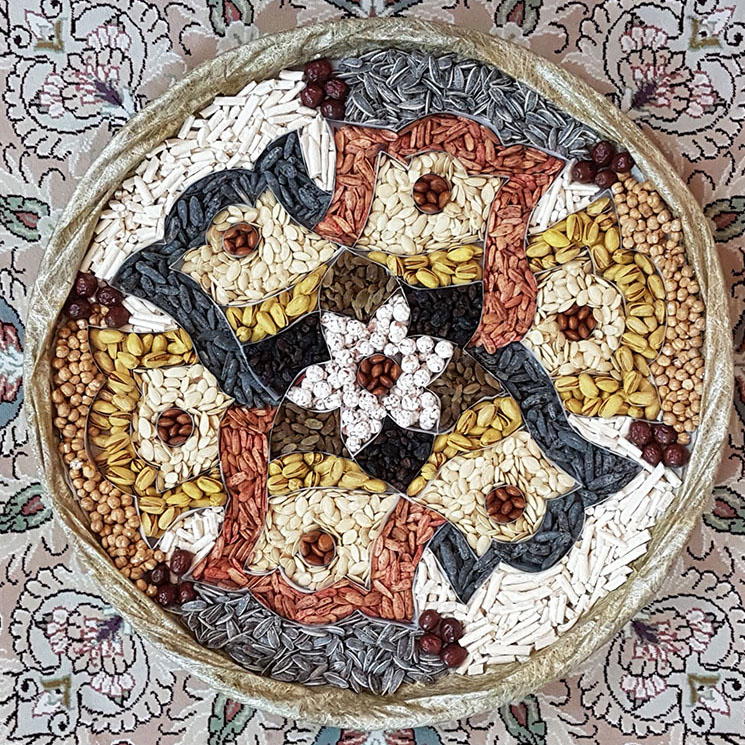
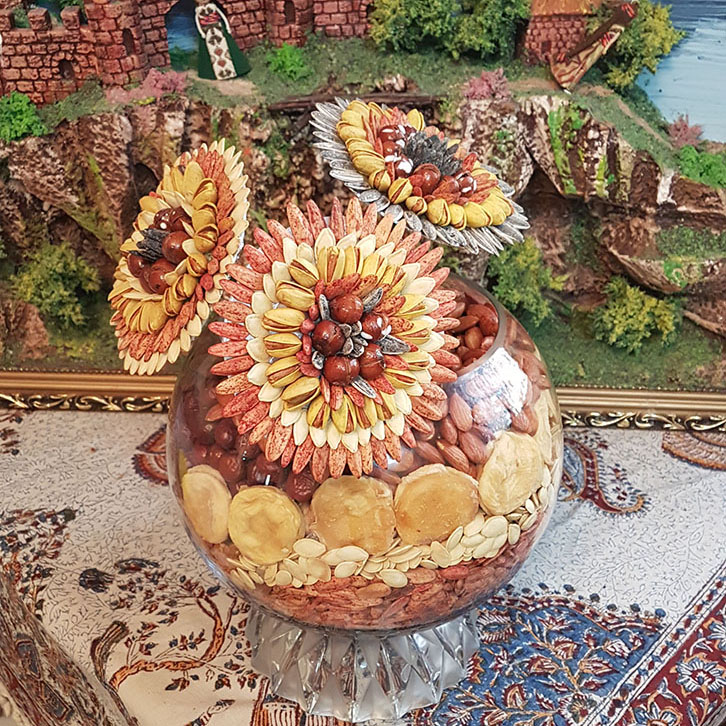
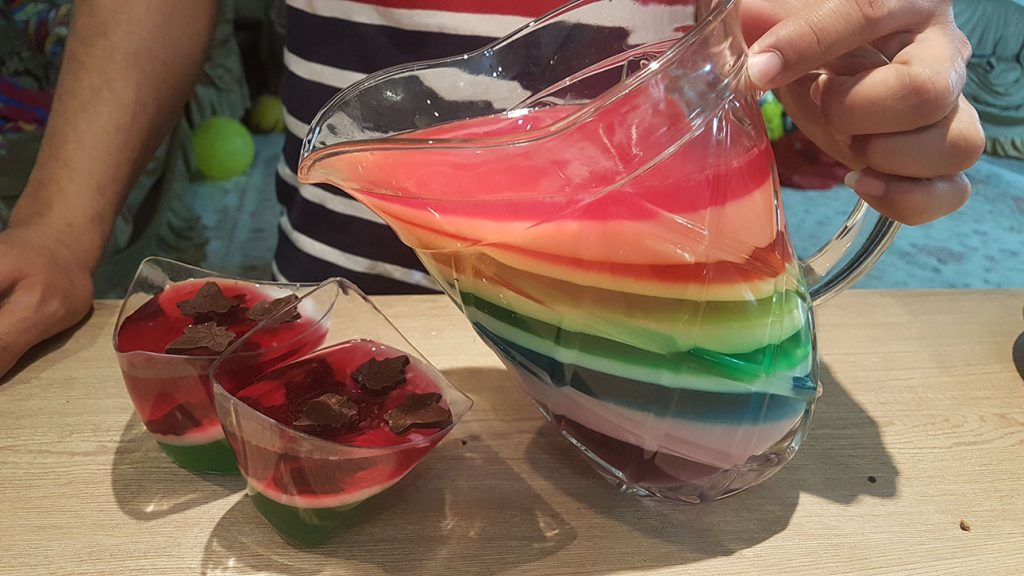
Yalda Night is the longest night of the year in Iran, families gather usually in the eldest family member’s house, like the grandparent’s house, and celebrate the night for having the family they love and appreciate every single minute of spending time with them, as what makes Yalda the longest night is being only one minute longer. It is traditional to design a table with nuts, fruits and anything else depending on the person’s creativity and taste.
I enjoy trying new recipes and if I had the chance I would have made a new meal every single day. I also love learning about other countries, and you can find my experiences from other cultures under the Travelogue tab.
Serving Guests in Different Regions
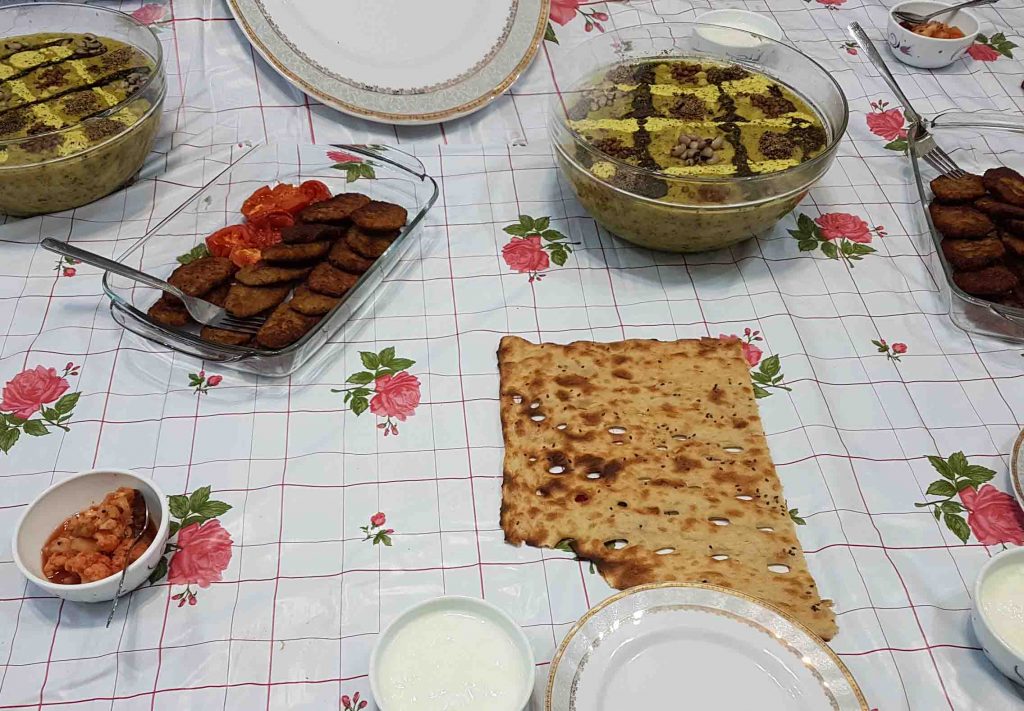

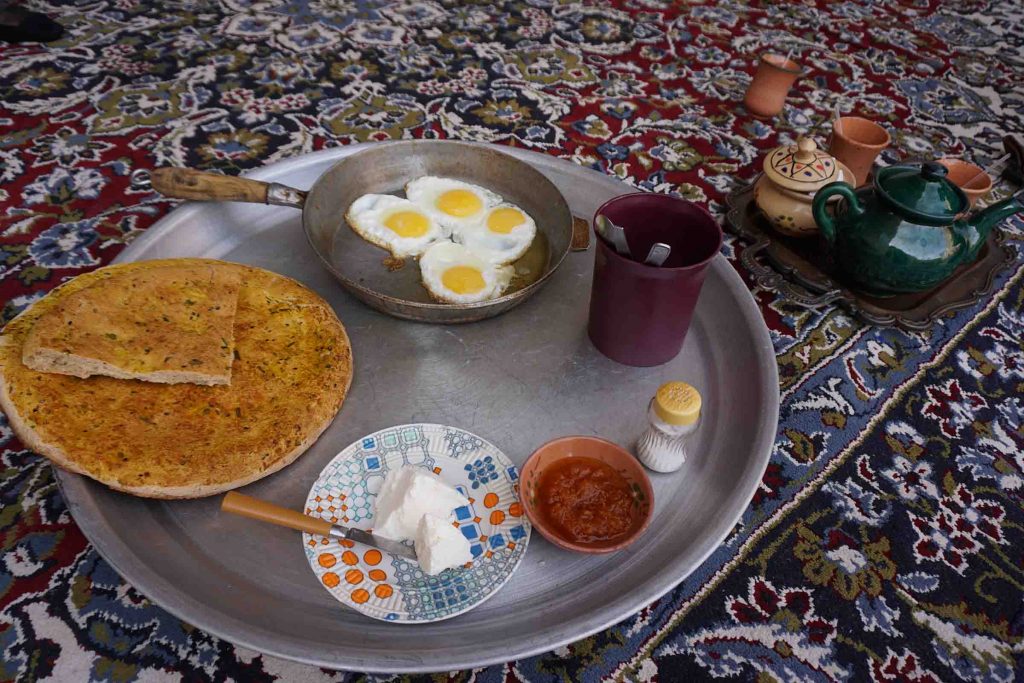
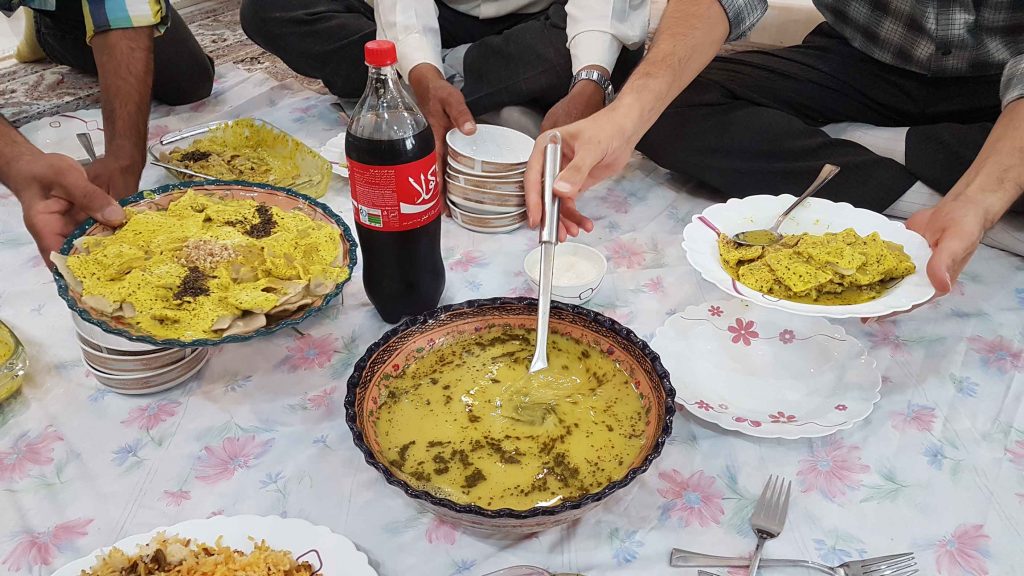
Each region of each country has its own style of serving and eating food, which is amazing. These photos were taken while I was a guest. In the photo with rice, khoresht and juice, the stew or khoresht is “Ghormesabzi khoresht” and rice cooked this way is called “chelow” and the chicken is prepared with tomato paste. The yellow rice dish is “tahdig” which is rice scorched with yoghurt and saffron. Other than the main dishes there are jelly and a typical kind of salad, vegetable and juice. The salad is made of lettuce, cucumber, tomato and carrot. The vegetable plate usually consists of parsley, leek, basil and mint. This table needs to be prepared from the early morning or the day before.
The photo on the left belongs to Gonabad city in Khorasan Jonubi province, containing “Aash Lakhshak” and pan Kabab. The bread is called “Sangak” and is baked on top of small stones in a bakery, that is the type of bread I really miss whenever I’m living outside of Iran. The salad is mainly made of pickled cabbage and tomato paste.
The egg breakfast is served with cheese in an house turned into a tourist hostel in Riab village close to Gonabad. This kind of bread is mainly baked in this region of Iran and is very thick in comparison to other types of bread you can find in typical bakeries.
The bowl being served contains “Aash Joosh Pareh”. Aash Joosh Pareh is a traditional food cooked mainly in special regions such as Gonabad, the city I talked about under the travelogue tab and in the Khorasan Jonubi Province page. This Aash contains a kind of thick “Reshteh” called “Lakhshak”. Reshteh is dough, dried in straw shapes. Unlike what is said on websites, Reshteh tastes nothing like noodles. In Aash Joosh Pareh, Lakhshak is wrapped around ingredients such as lentil, sesame, poppy seed, and cannabis seed and then it is boiled with spices such as turmeric. A similar food to this kind of Aash is dumpling. This food is designed with walnut and cumin powder. I like to mention that we also have “Aash Lakhshak” but in this type of Aash, Lakhshak is not wrapped around anything. Actually I think Aash has the potential of having a complete website for itself.
Persian Sweets
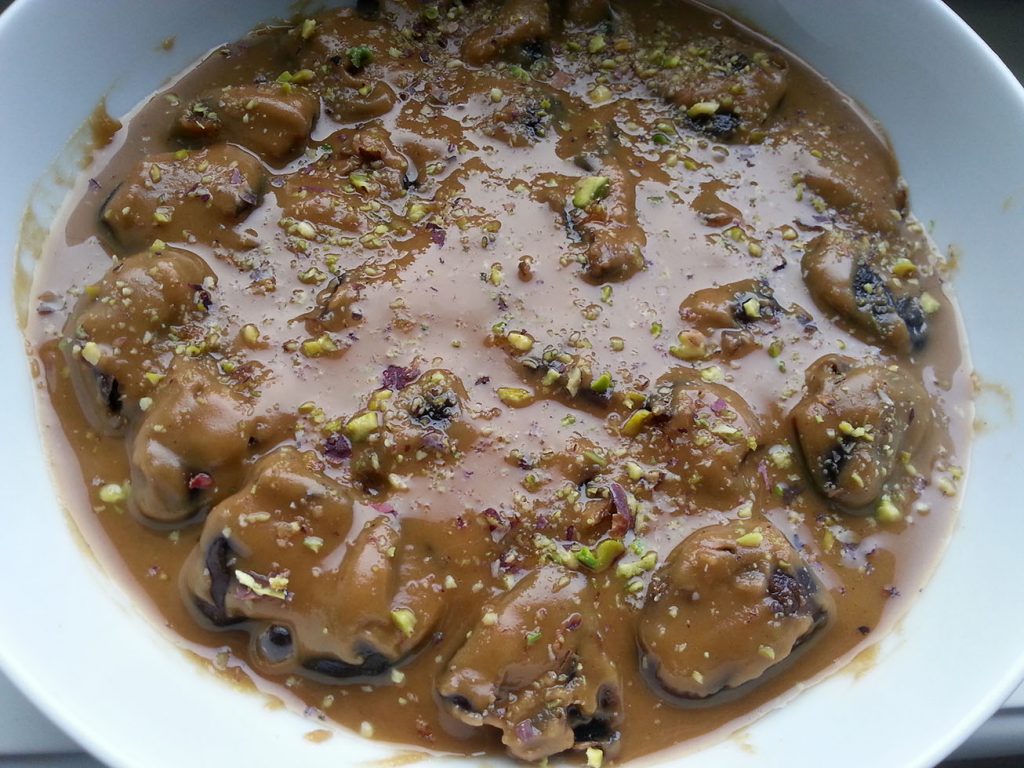
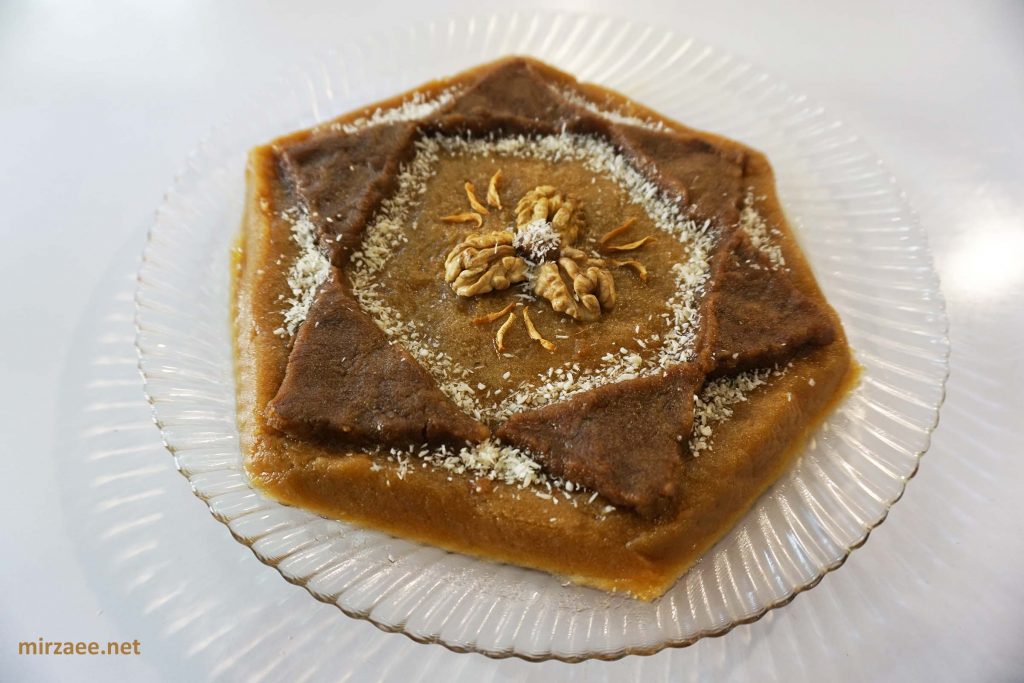
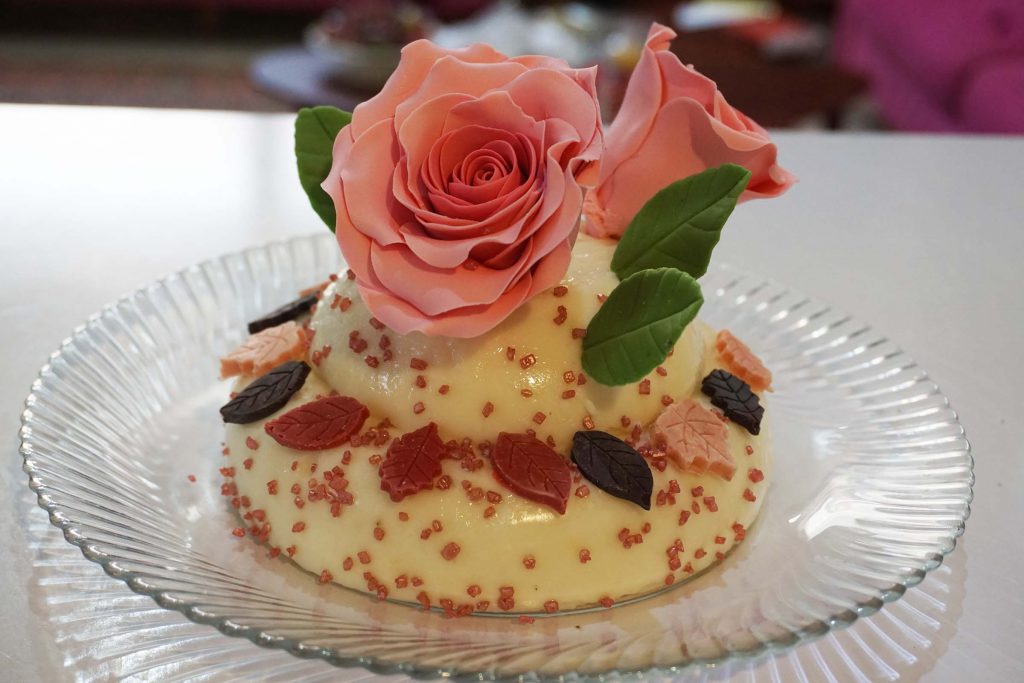
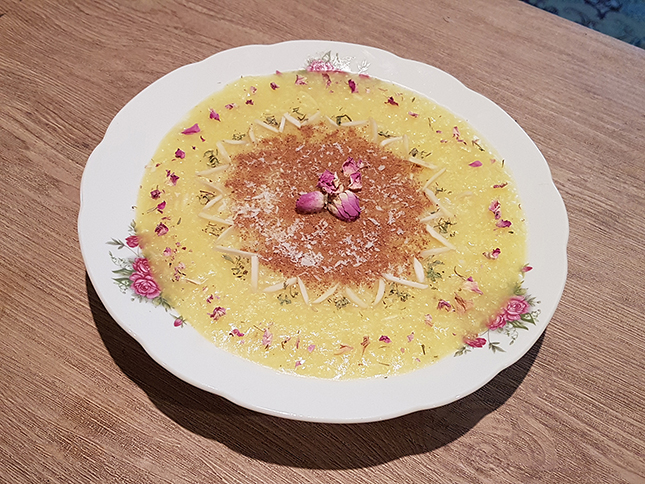
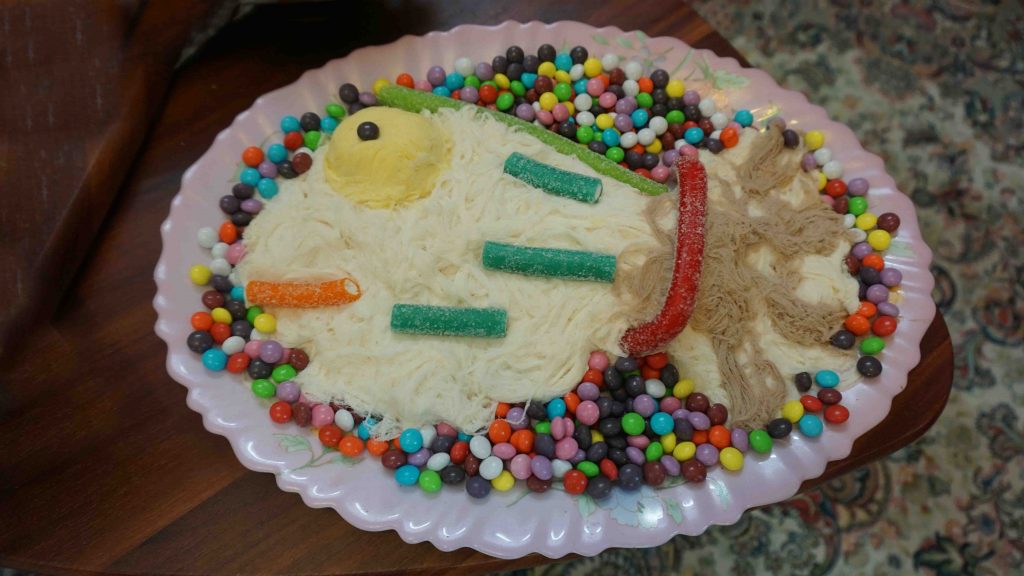
Halva is made by frying flour and adding oil, sugar, cardamom, rose water, and saffron. Ranginak is the same as Halva but dates are used instead of sugar which makes it healthier and taste different. There are loads of types of halva, with milk, syrup or other ingredients but the most common and traditional type has these ingredients.
Fereni is stirring starch, milk, rose water, cardamom, and saffron or vanilla. If you add enough starch, when you cool it down it becomes sturdy enough to hold its shape like the one here.
Sholezard is rice, milk, saffron, cardamom and rosewater usually designed with cinnamon, slivered pistachios and/or almonds and any other pretty edibles.
We love Saffron, rosewater and cardamom in our sweets, cinnamon is also popular for doughy sweets like biscuits or cookies. It might be interesting for you to know in Iran, there are only a few types of cookies actually called cookie, all other types have their own names, for example, “Raisin cookie” is called “Raisin Sweet” which is the English translation of “Shirini Keshmeshi” so it’s considered a sweet and not a cookie. “Rice Bread” is the English translation of “Nan-e Berenji” but it is not bread, it’s another type of cookie. Another interesting fact is that almost every area has its own type of cookie and some of them are even famous such as the Fuman cookies belonging to the beautiful city of Fuman. To be honest, I’m not sure what specifies a sweet as a cookie in Persian, and any explanation that comes to my mind has a counterexample, so you just have to learn it.
The dish with a fish-like sweet contains cotton candy. In Iran cotton candy can be found as fluffy as the ones sold on stick every where, but you can mostly find it thicker and packed in different styles in plastic bags. I made this shape for my son’s first birthday party with vanilla, saffron and cocoa cotton candies.
Food
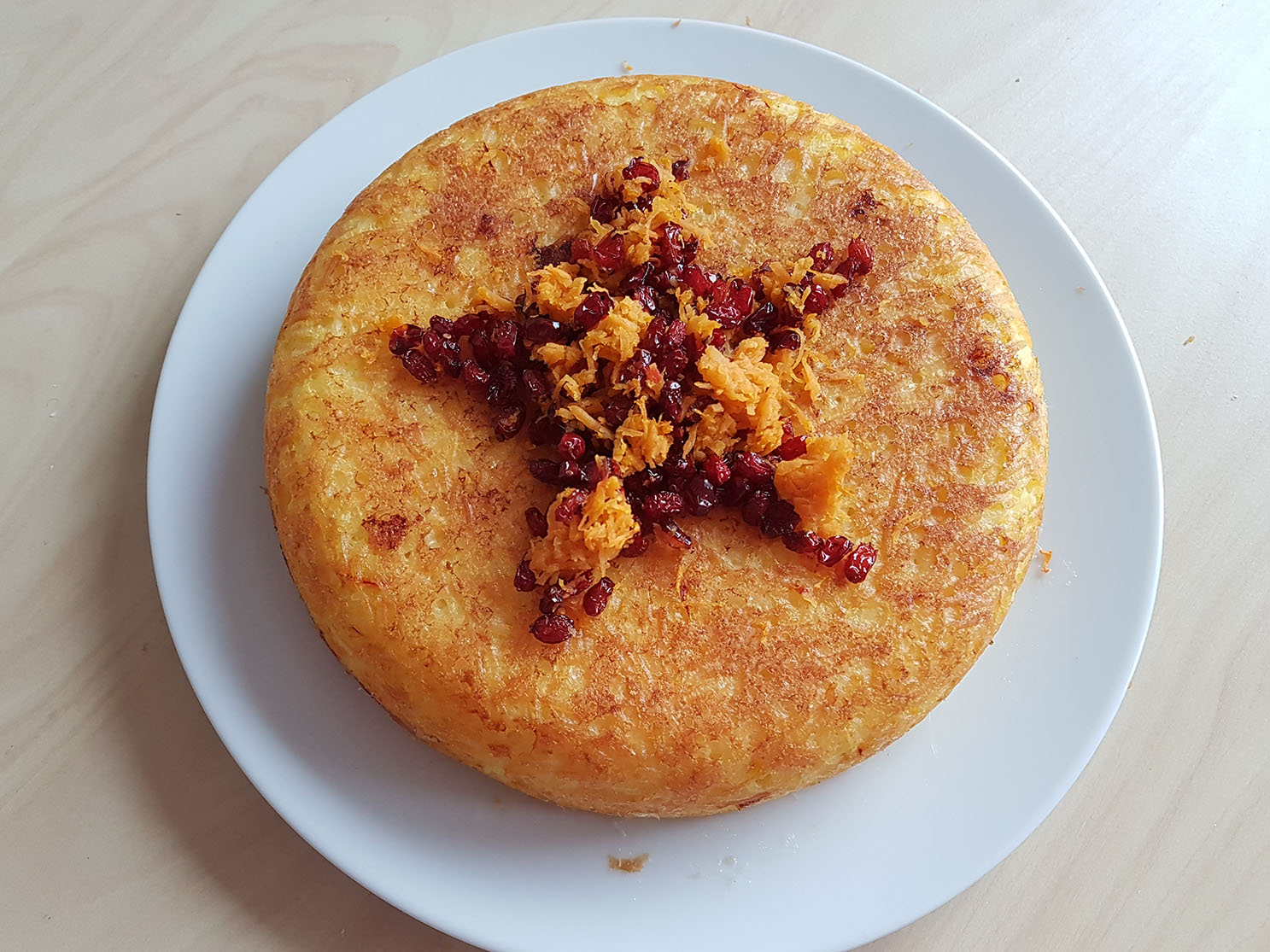
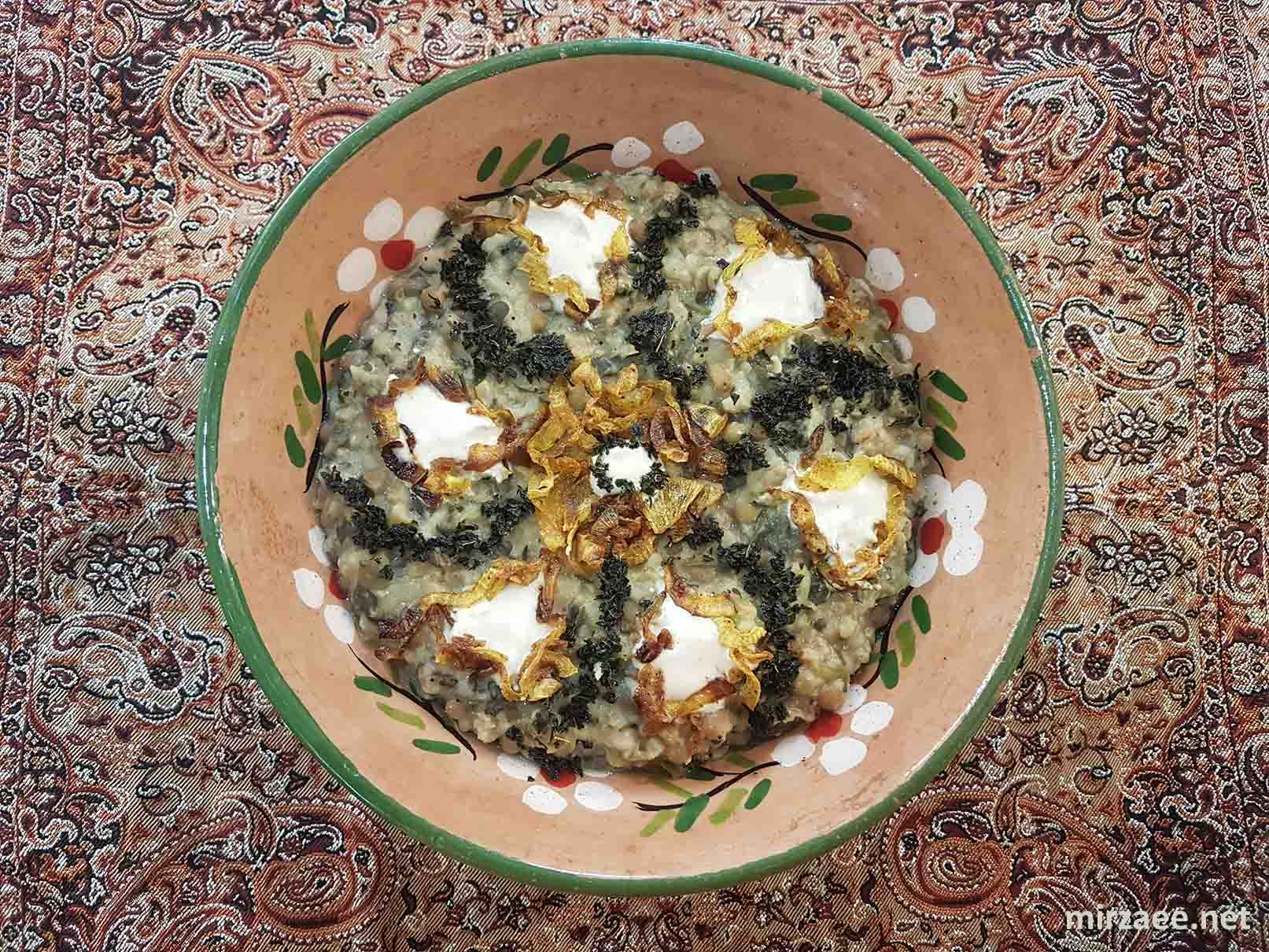
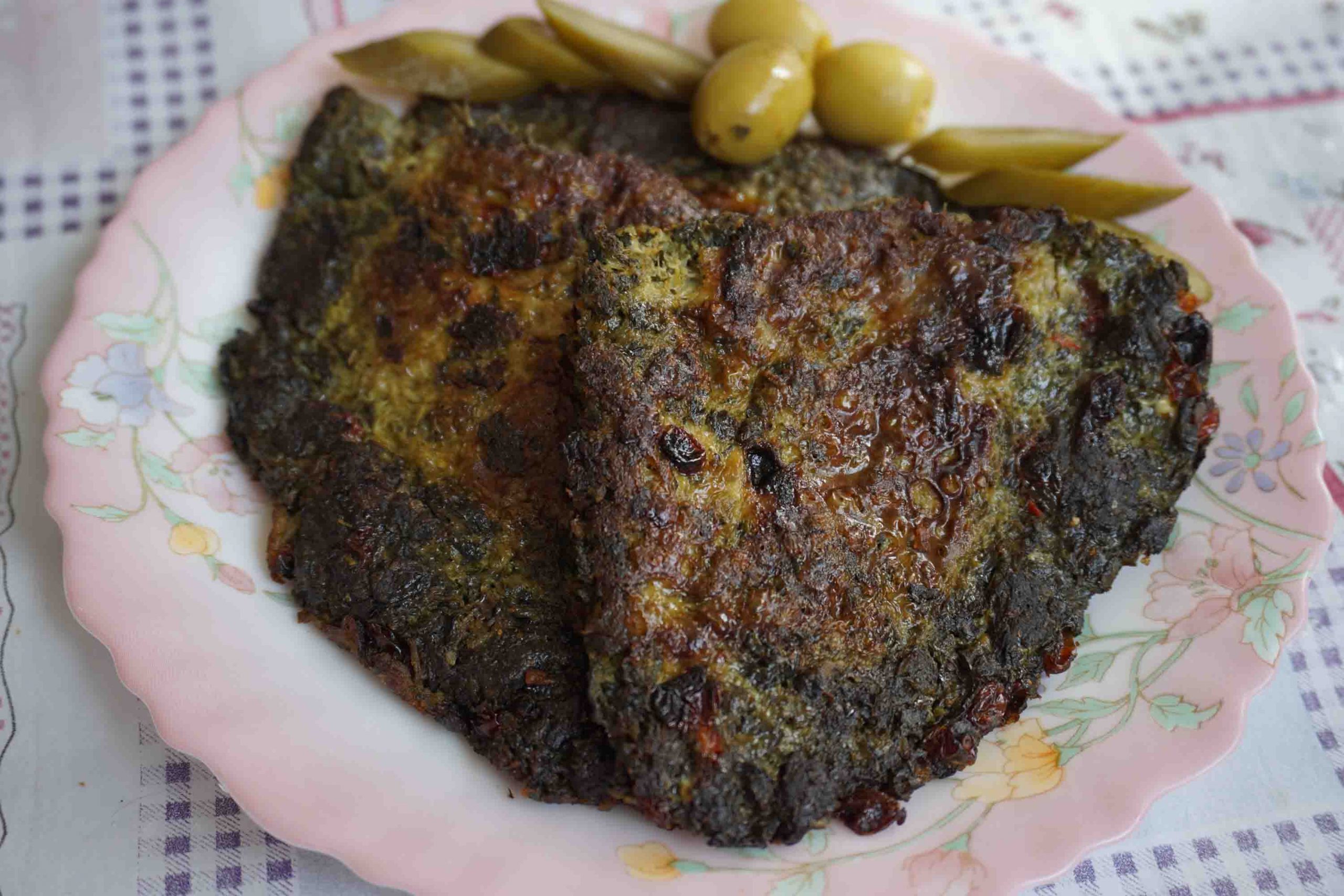
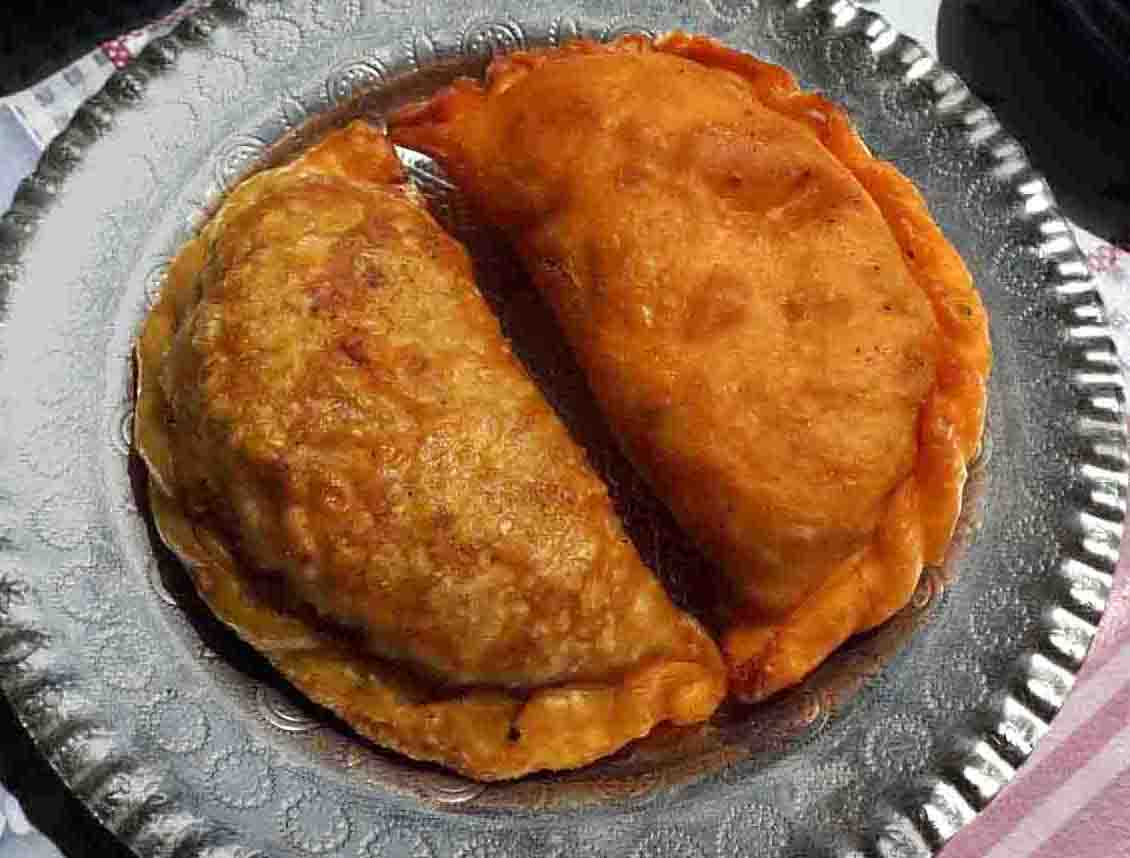
These are chosen from Persian routine cuisine.
Tahchin is when cooked chicken is mixed with yoghurt and saffron and fried on the bottom of the cooking rice pot.
The middle photo is “Aash Reshteh” designed with “Kashk”, fried onions and dried pepper mint. This kind of “Aash contains peas, beans, vegetables and “Reshteh”. Reshteh is tall thin sticks made of wheat flour and soften by cooking. There are various kinds of Aash, the type of food I believe would be extremely popular in countries with cold weather.
The very green dish of Kookoo Sabzi is made mainly from vegetables of chives, parsley, and coriander, other ingredients are spices such as turmeric or curry, you can add Zereshk and Sumac to give it a bit of sour taste and walnut is a great match with this food.
When someone says Pirozhki (Pirashki), something like the photo here comes to my mind with ingredients of minced lamb meat, potato, onion, garlic, and maybe bell pepper. There is a jock in Persian that says someone asks an Iranian “how often do you use onion in your food?” The Iranian answers “first we fry the onion then decide on what to cook!”
Nature’s Gifts
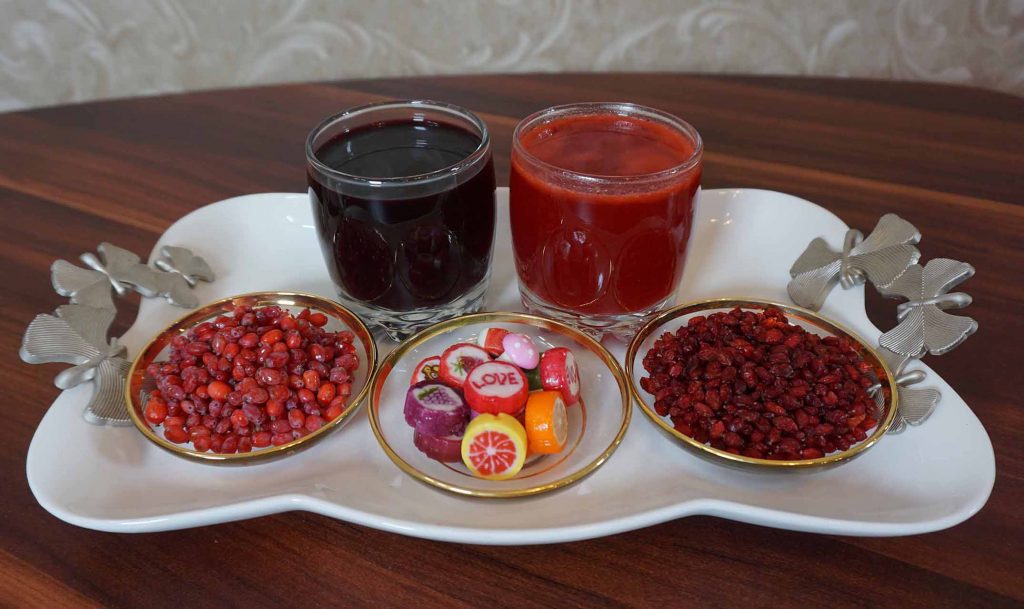
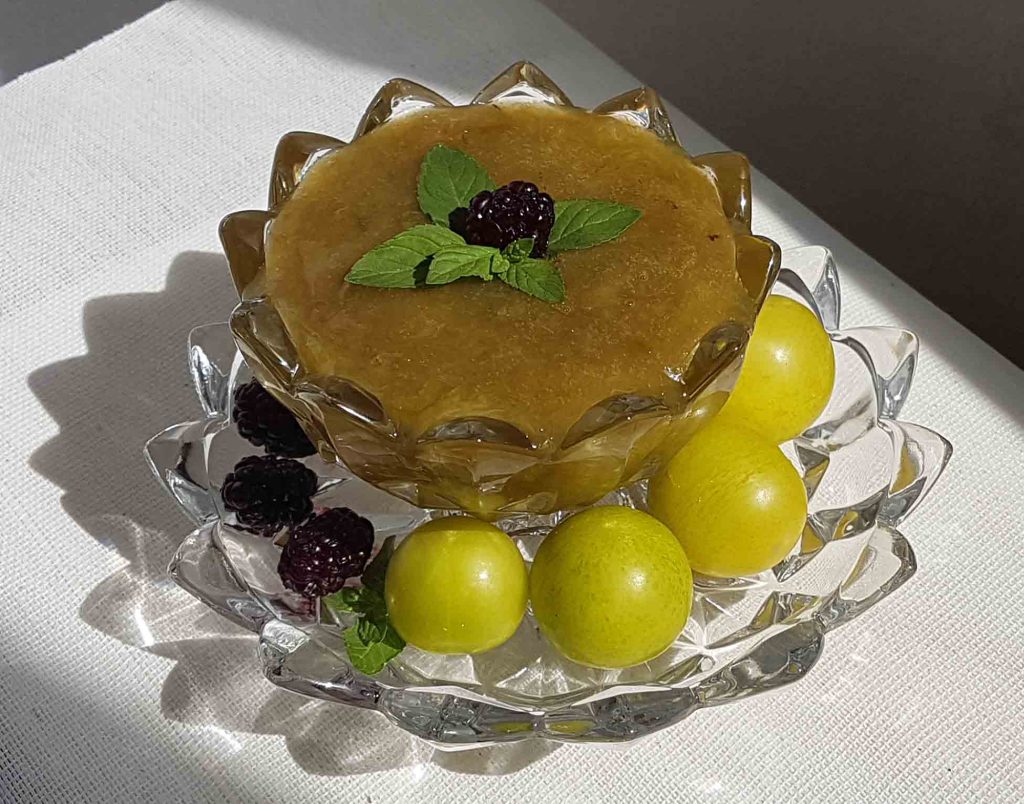
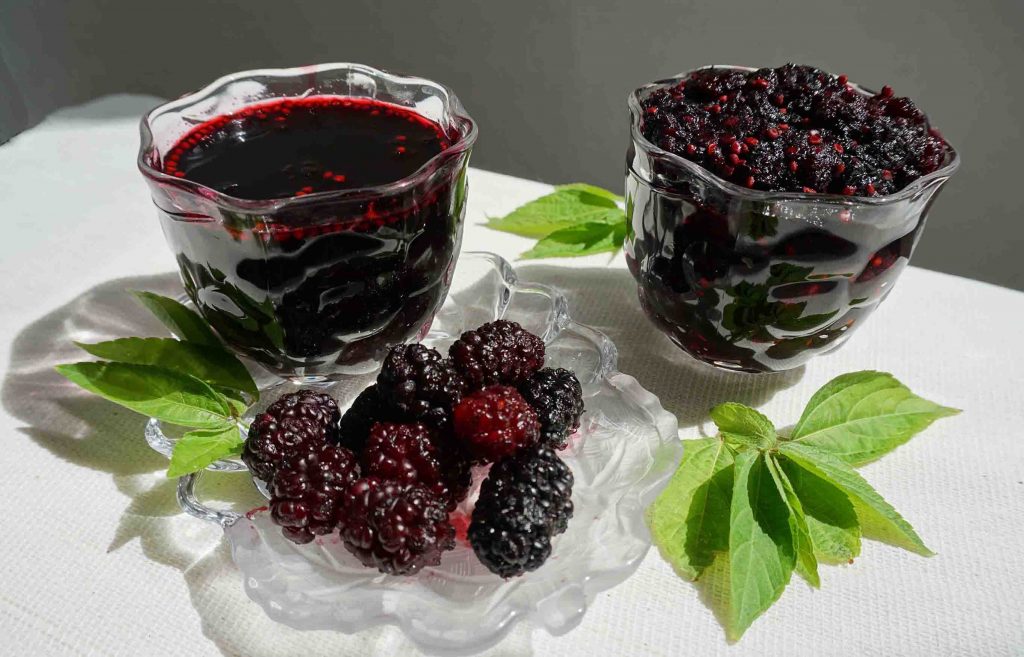
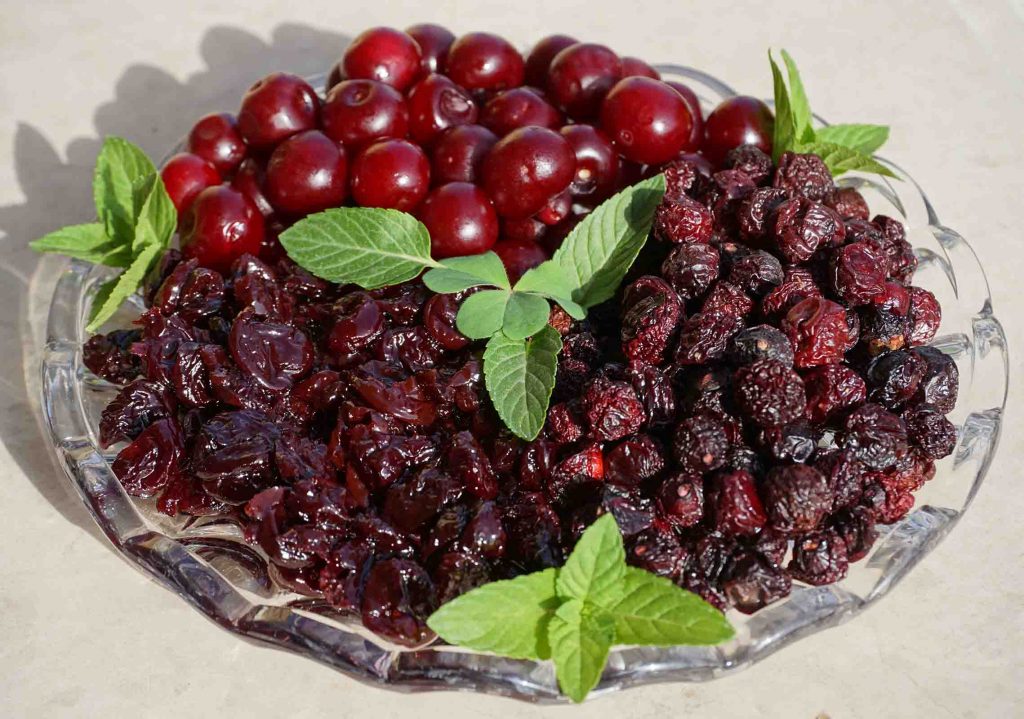
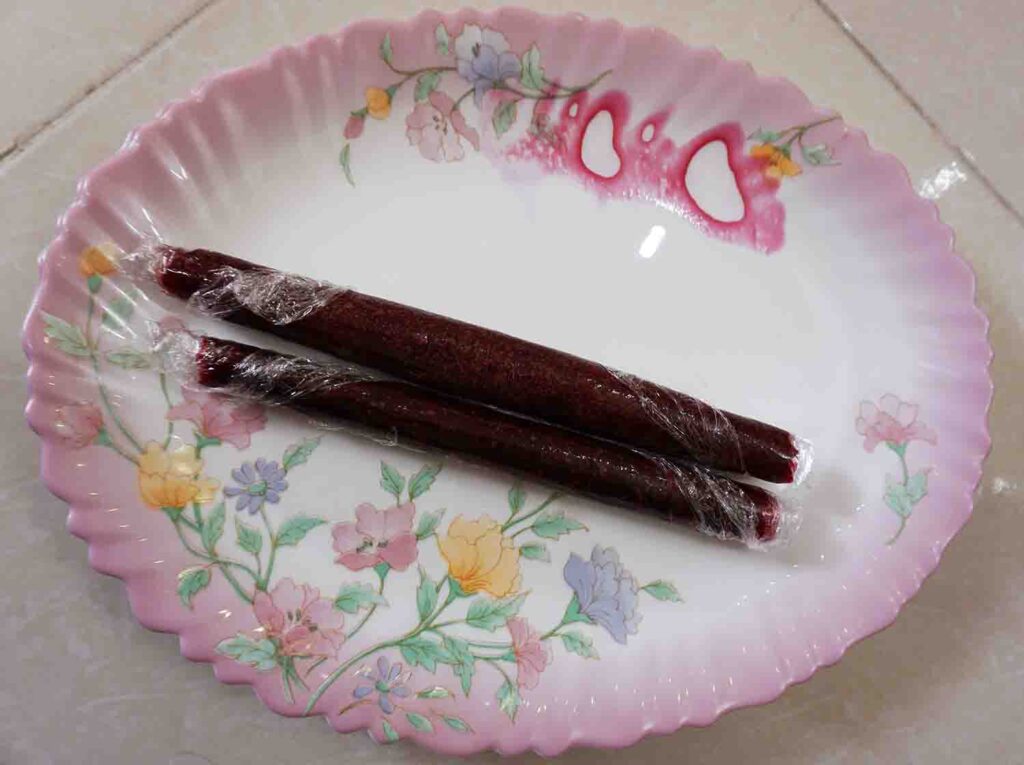
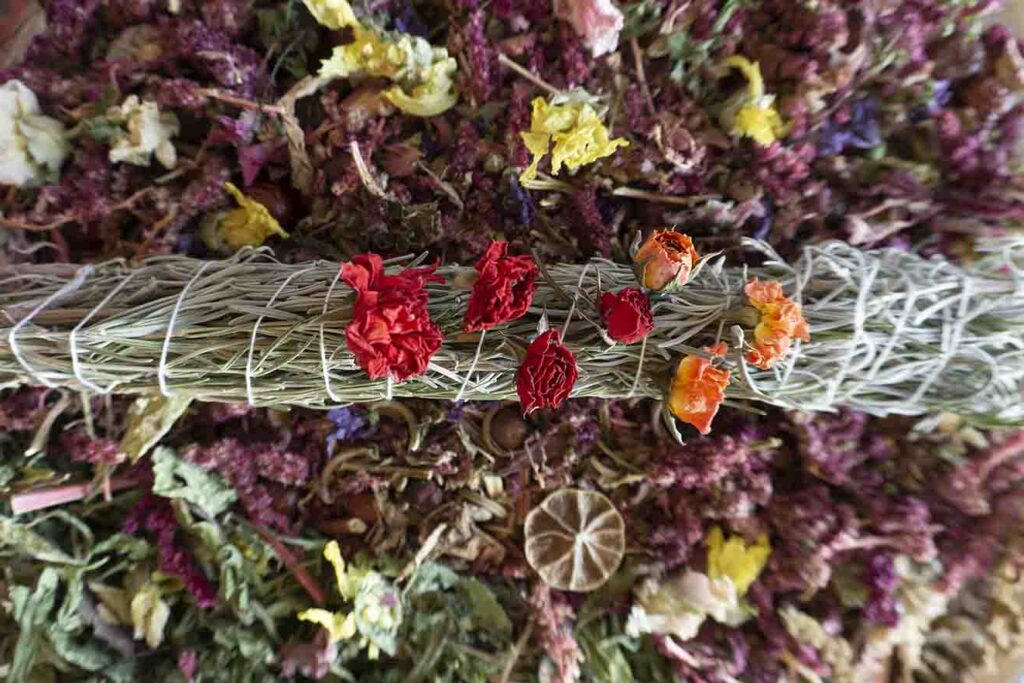
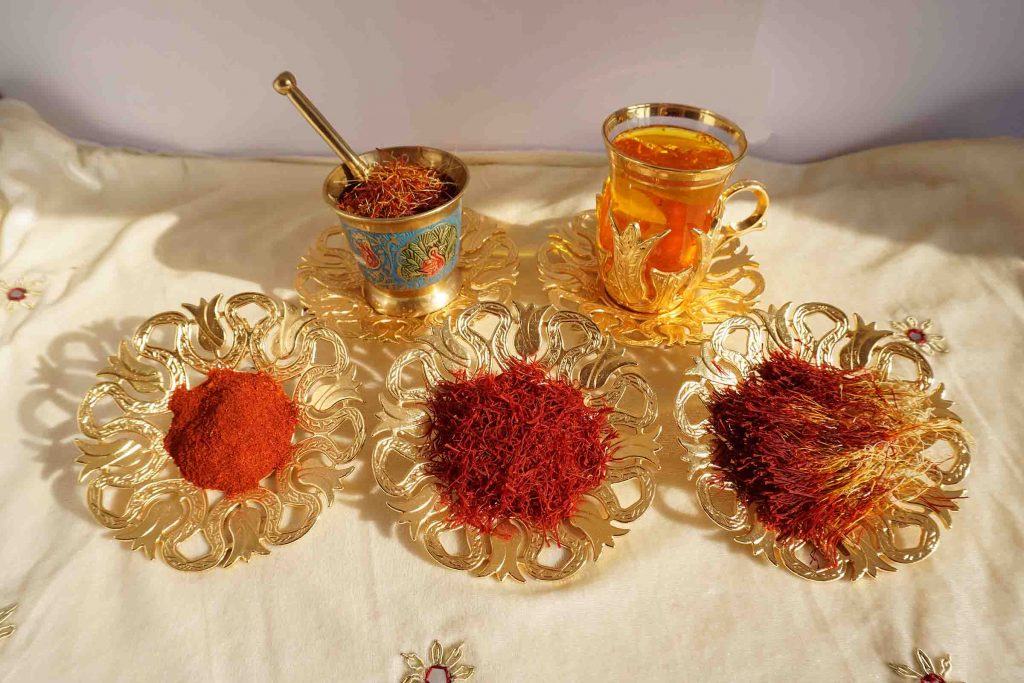
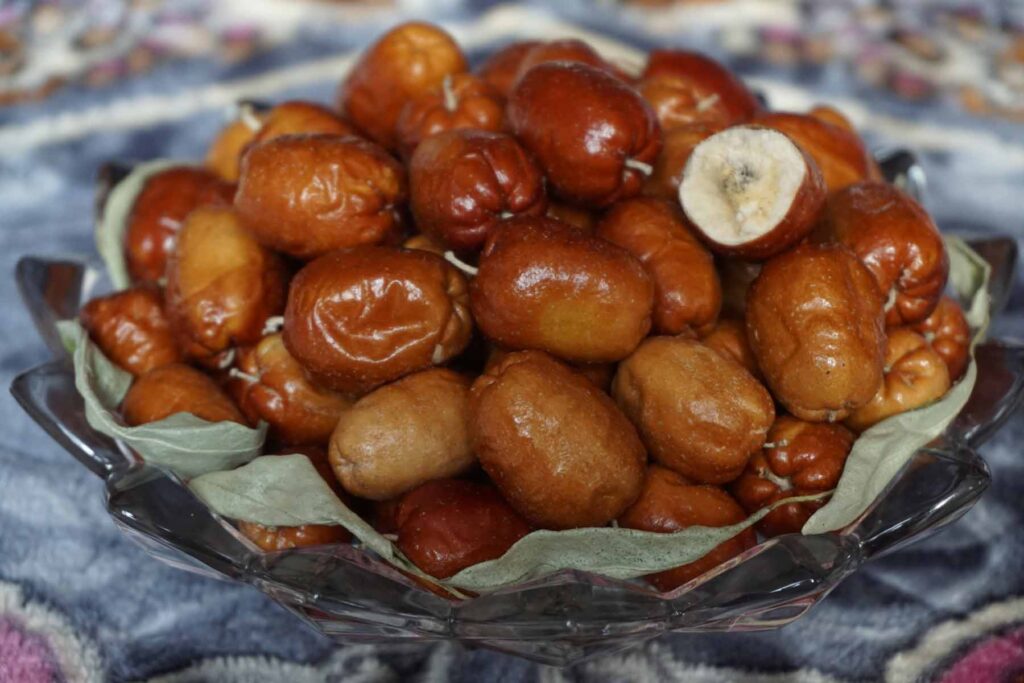
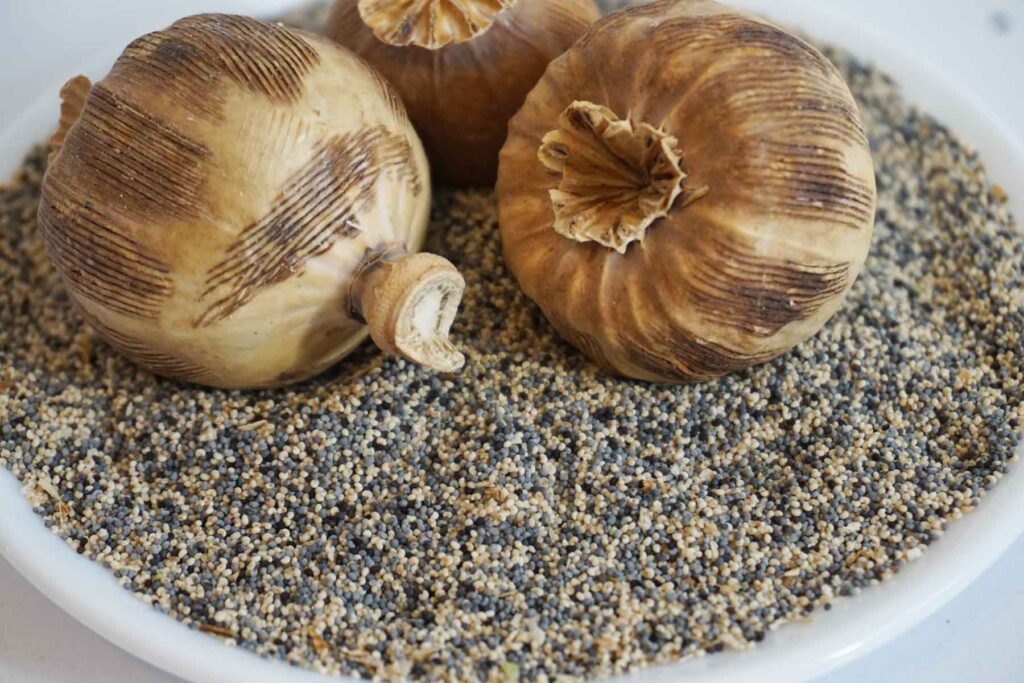
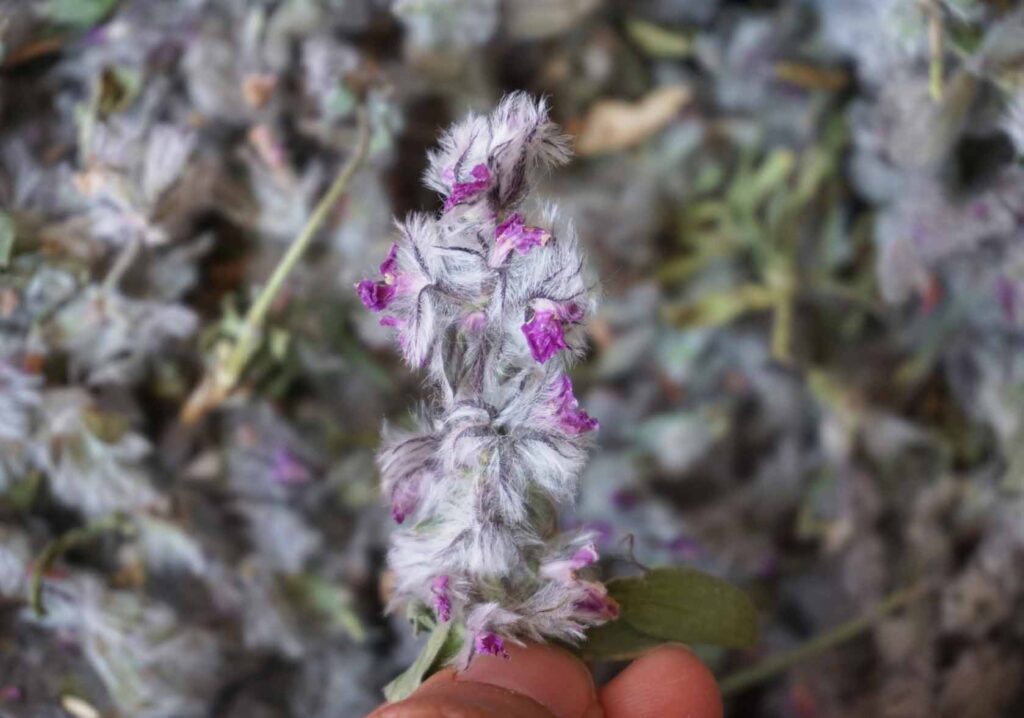
Iran is blessed with a variety of fruits and natural products, from sour barberries to the world-renowned saffron. Growing up in northeast Iran, I’ve always appreciated the simple pleasures of nature, like freshly picked black mulberries or the incredible taste of greengage plums.
The fruits I’m going to talk about in this part have a sour sweet taste, my favourite taste, so it is difficult for me to explain these fruits as even thinking about them makes me wanna have some.
Barberries have a sour and a bit sweet taste. Barberries in the photo have 2 forms of dry and fresh, they can also be kept frozen. The barberry juices here are from two different kinds of barberries, one red barberry and the other black wild barberry. Candies are not merely for photo decoration; as the juices here are not mixed with sugar you might need them for drinking such sour juice!
As stated in Wikipedia ” The first true greengage came from a green-fruited wild plum which originated in Iran. ” Some Iranians really love greengage plums, I guess one of the reasons is the fact that even their ancestors used to eat them, another reason is that we love the sour sweet taste! What’s in the bowl is a very delicious greengage plum jam and I eat them instead of candies.
Black mulberry here has 3 forms of raw fruit, jam and condensed juice.
I put 3 forms of sour cherries in one plate, one of them is its fresh form. It is very common here to dry sour cherries and eat them as a snack. The other form of sour cherry on the plate is its jam. The next photo is also made of sour cherries, in the tray it is a rolled fruit leather (Lavashak), I took its photo because of the two hearts that were naturally formed on the tray and the romantic thing is that this was the first time I was making Lavashak after moving to our home with my husband.
Saffron is called red gold in Iran. Iran is the best saffron producer in the world and Qaen city has the best saffron in Iran. The region where my grandparents lived, Gonabad, produces some of the best saffron in the world. The quality of saffron in this region is close to Qaen and our relatives harvest saffron in November. When the saffron flower is ready, you must pick it and separate the petal from the stigma, and even one day delay will result in petal withering and a difficult separation task, so you do not see saffron flower in my photo and instead I photographed saffron Sharbat in slim waist cup, its powder, the red part of stigma, the whole part of stigma and stigma pieaces in a mortar purchased only for powdering saffron.
Smudge is a stick made of herbs and is burned to produce a good odour and release positive energy. This smudge is made of rosemary and lavender and designed with miniature roses, the herbs I could easily pick in our garden. I took the Smudge photo on top of a bunch of herbs useful for cold and flu.
I love the aroma of Mountain Tea, and also its colour, I’m glad that there are some herbal medical natural teas that smell and taste good!
When you buy poppyseed in Iran they are creamy colour, in Europe they sell you dark grey ones, but as you can see in the photo of this gallery they range in colour and depend on the poppy pod they are from.
Breakfast
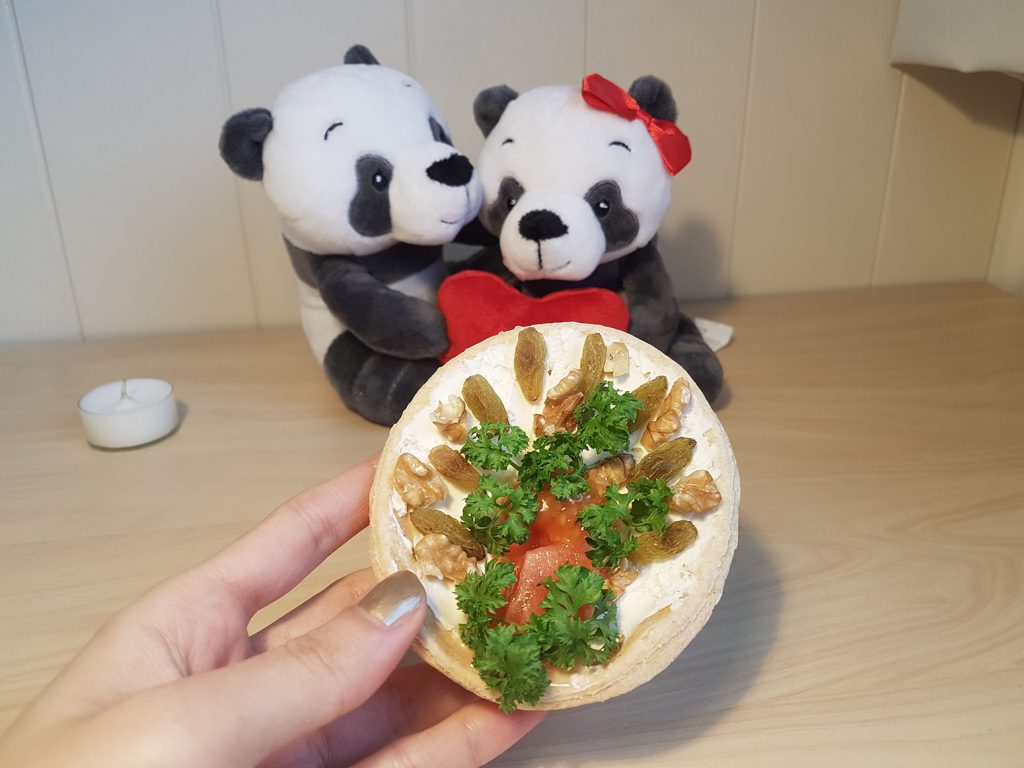
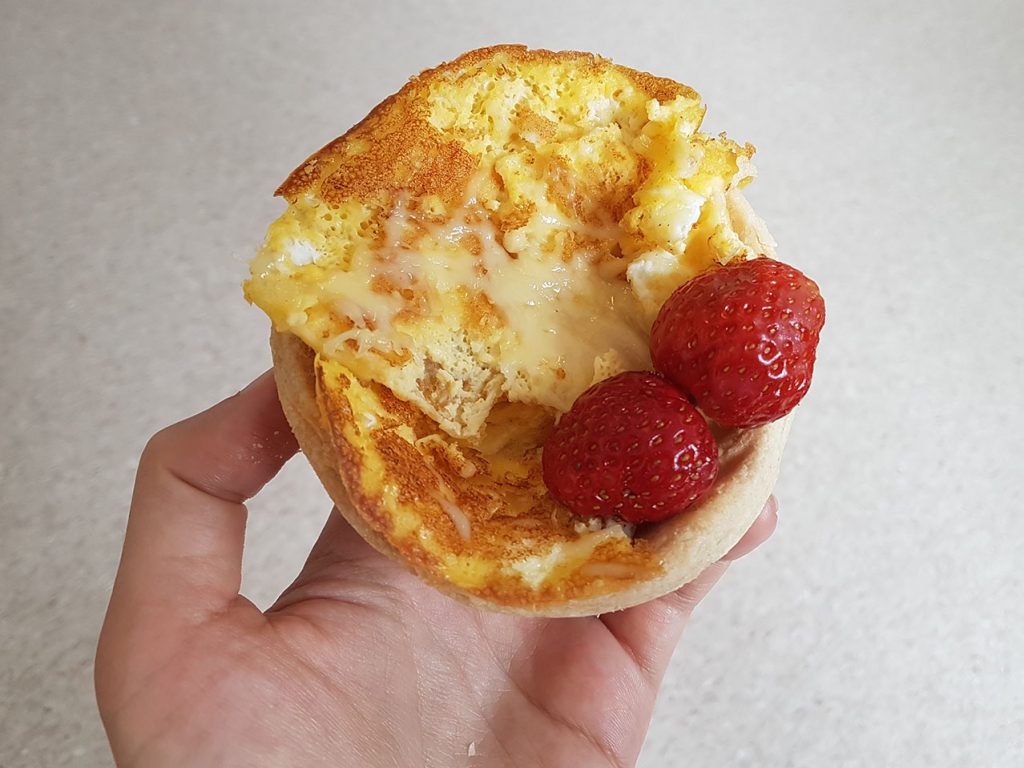
These two photos are similar to common breakfasts in Iran, a bit fancier though. Scrambled eggs are mainly cooked with onion, and sometimes garlic, but here it is with cheese to go with strawberry. It is common to have traditional cheese as a breakfast. Cheese sandwiches can contain raisin, parsley, walnut and tomato to give a combination with sweet and salty taste.
Normal Dishes + a hint
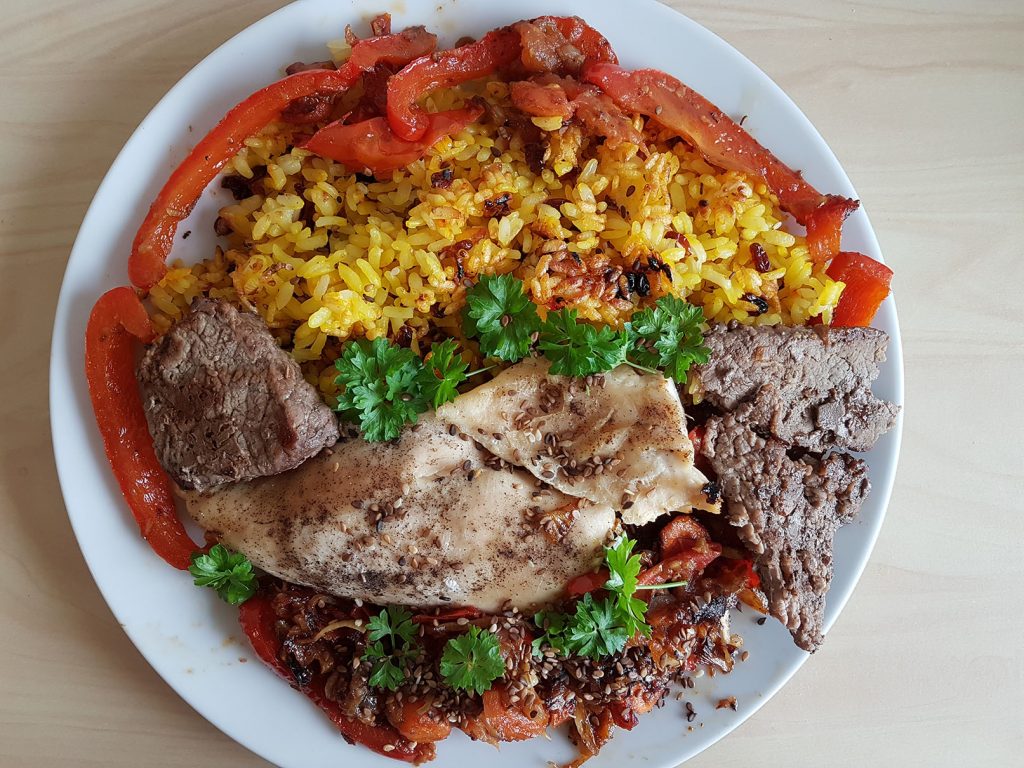
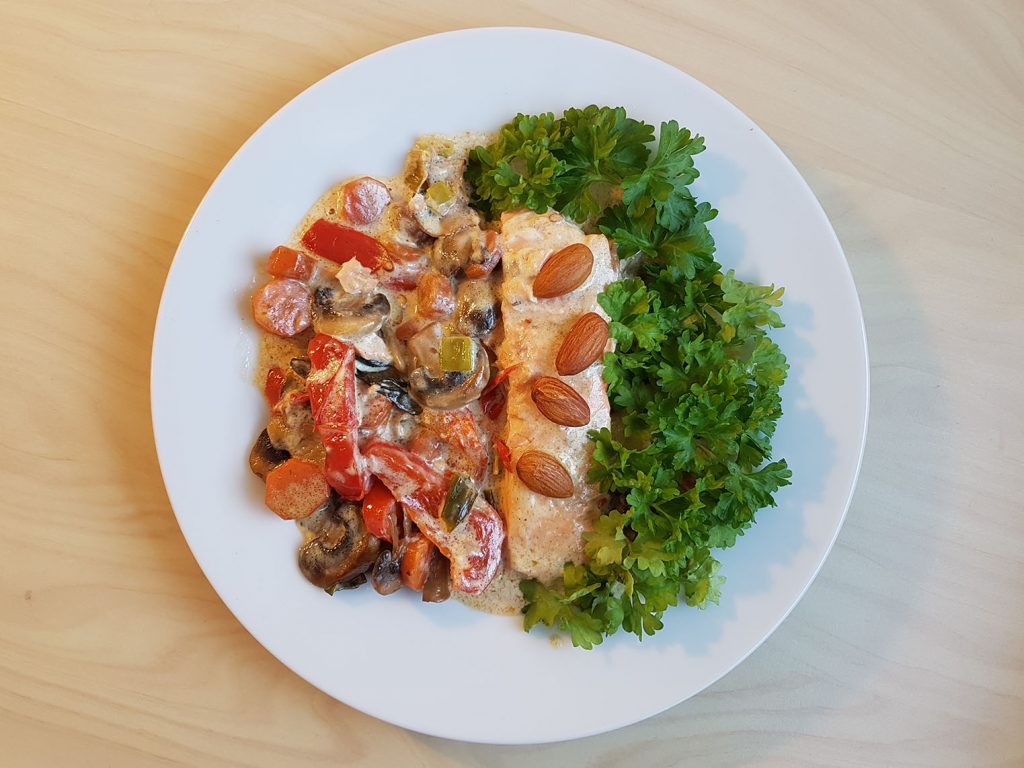
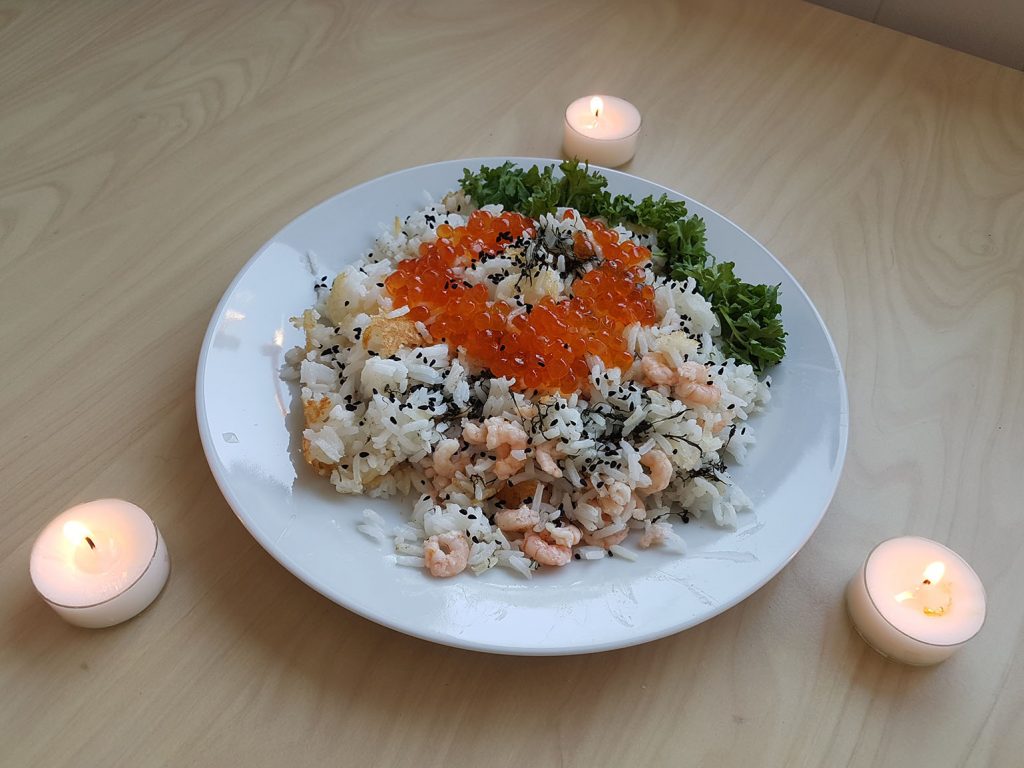
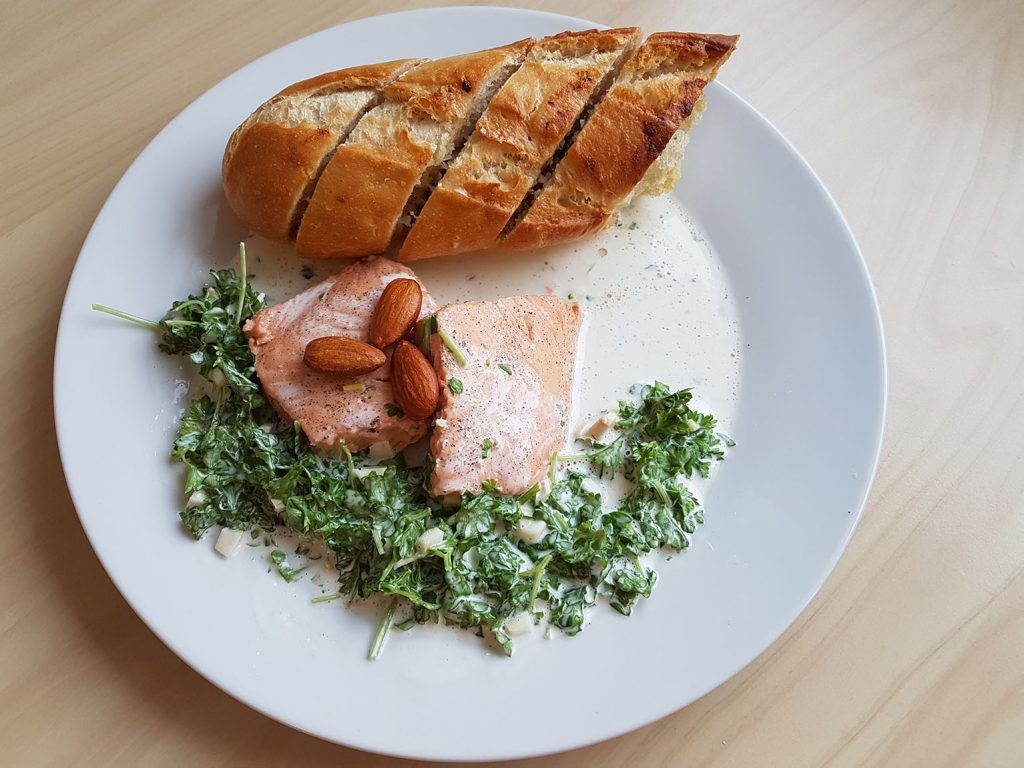
In these plates, I used ingredients that might be a bit unfamiliar for people from other countries. I cooked them in Norway, so I enjoyed combining Norwegian Salmon with the taste I like. In rice and shrimp plate, I used black seeds and fish roe with rice and shrimp which was a good mixture. Garlic bread, salmon, roasted almonds and parsley was one of my cooking trial and error dishes which ended up very delicious. Similarly, Salmon went well with mushrooms and tomato, after all salmon goes well with many tastes. In the saffron chelow & meat plate, I added brewed saffron to the rice while steaming it under a thick-cloth cover in its last stage of cooking. I should mention saffron needs to be brewed before being added to foods. If you simply add saffron to food similar to what is done with other spices it won’t give you the aroma and flavour it should, I say it as many of my international friends didn’t know about it when they were told.
Homemade Dairies
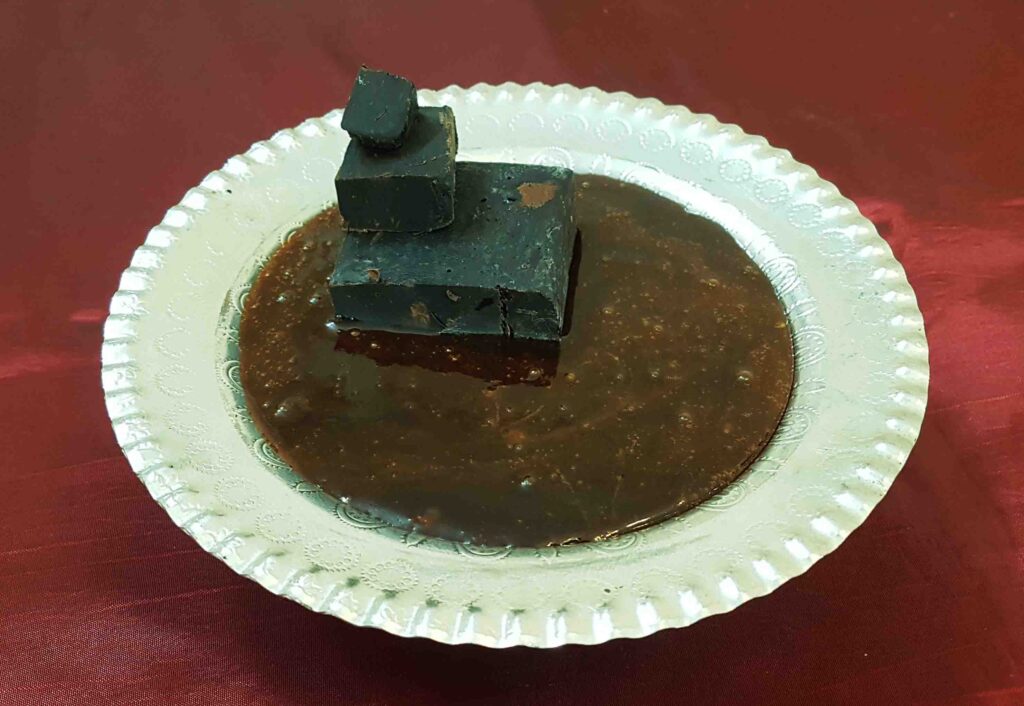
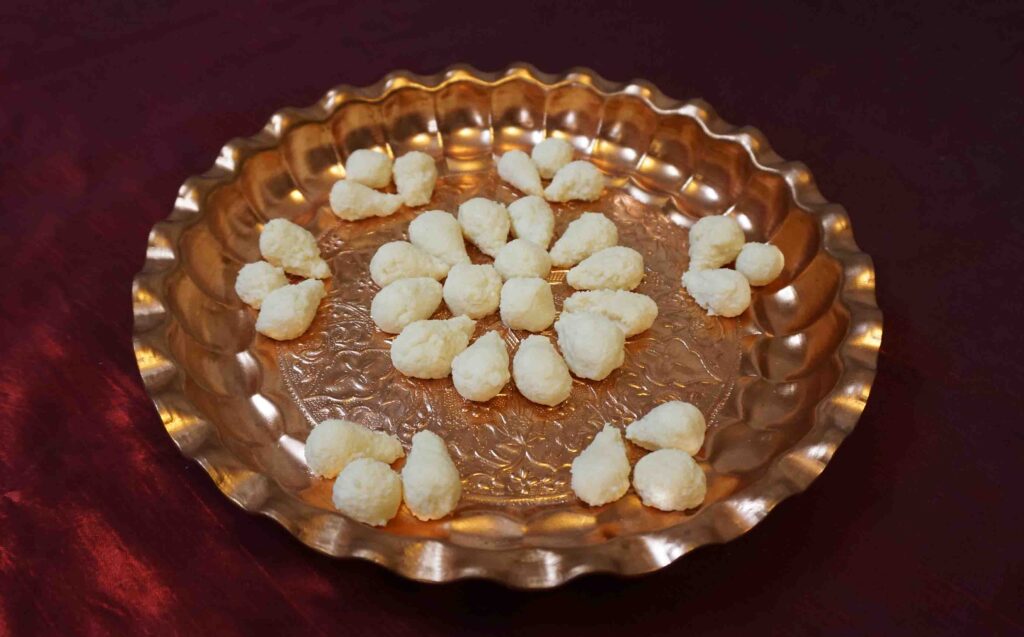
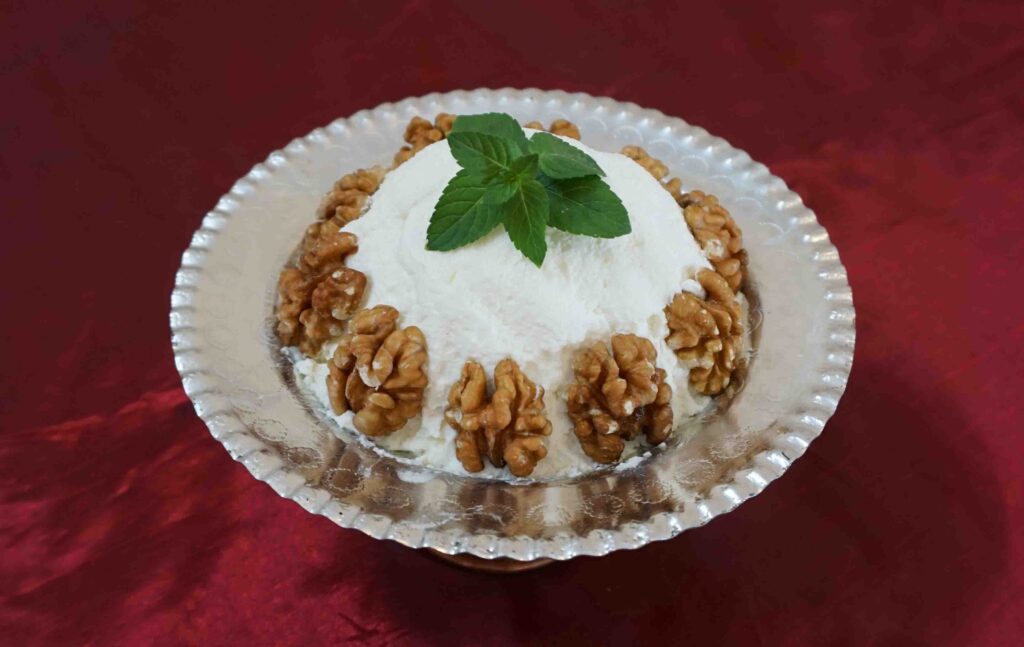

Using just 5 kilograms of milk, I once created a variety of dairy products at home simply using my cooking pots. From left to right they are Ghare Ghoroot, Dry Kashk, Strained Yoghurt and the bowl with mints on top contains Persian old-style yoghurt. I know it might be a bit confusing but I explain the procedure as when I first learned it, I was really amused. By heating milk to a certain temperature and letting it settle in a warm place for a few hours you get old-style Persian yogurt. Mixing yoghurt, water and salt you get Doogh (Ayran) and pressing it in a cloth bag gives strained yoghurt. Adding lemon juice to yoghurt breaks it and straining this broken yoghurt gives old-style Persian cheese, which I haven’t put its photo here. If you dry this cheese in small pieces you get Kashk. Boiling cheese water gives you Ghare Ghoroot.
7-Seen Tradition
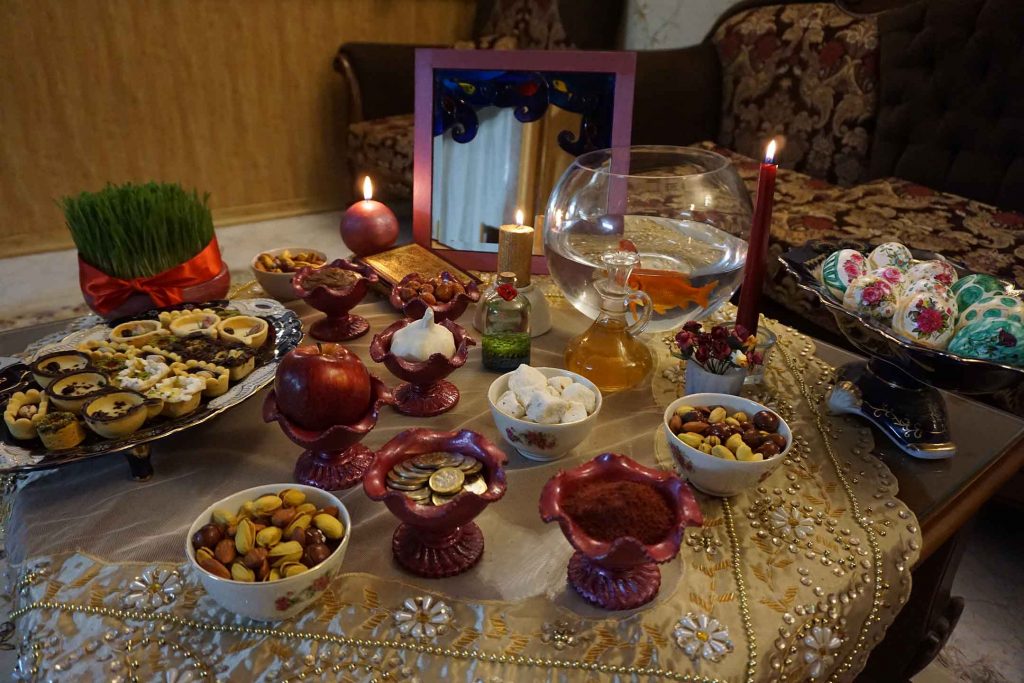
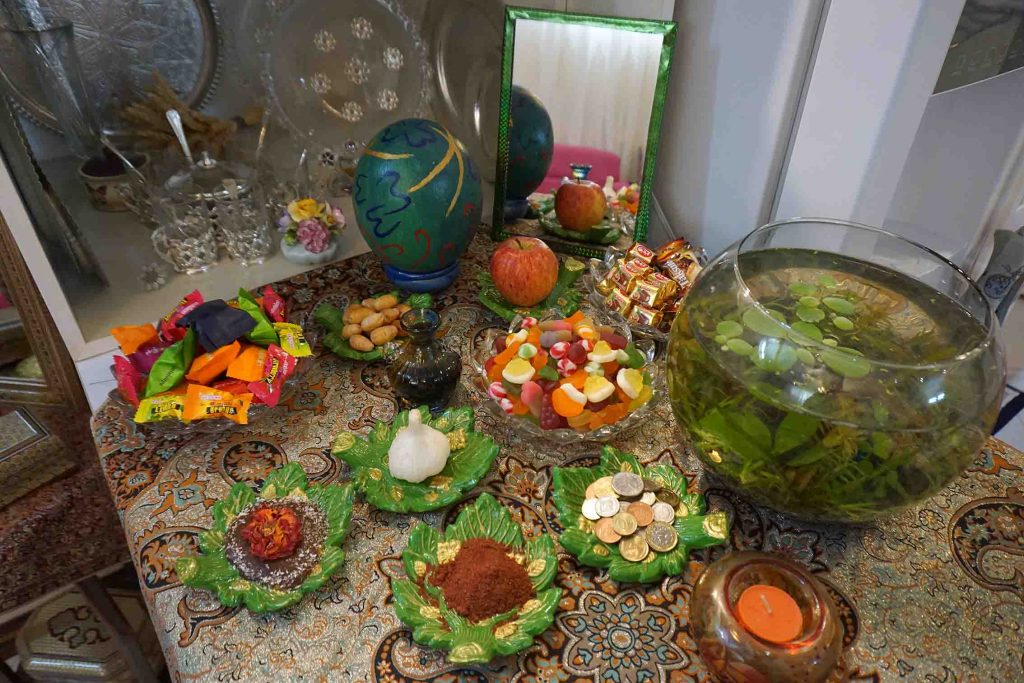
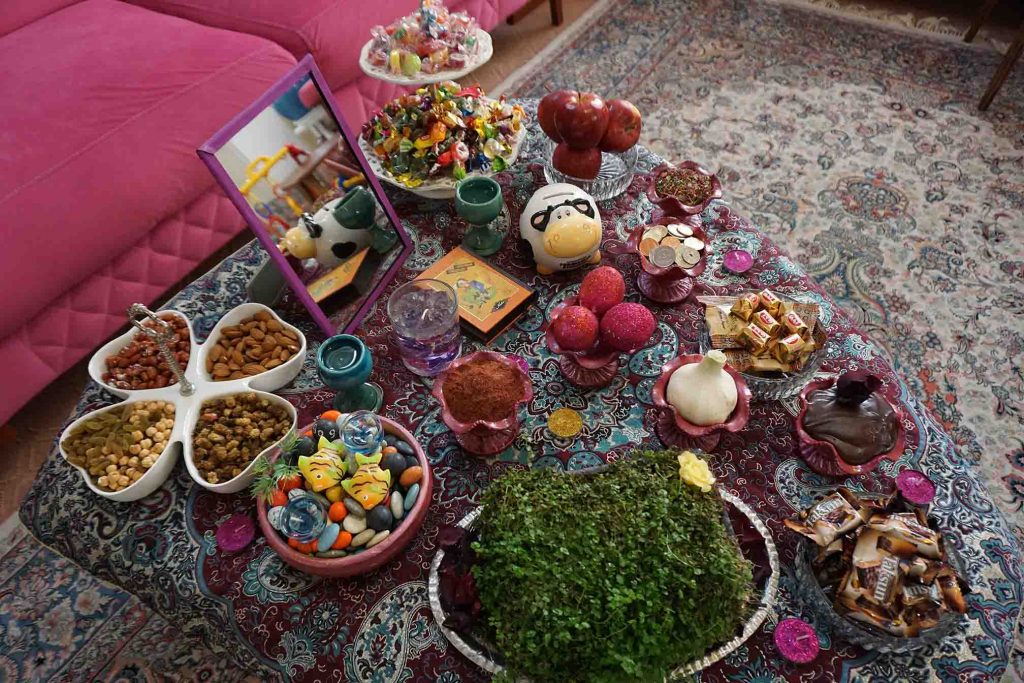
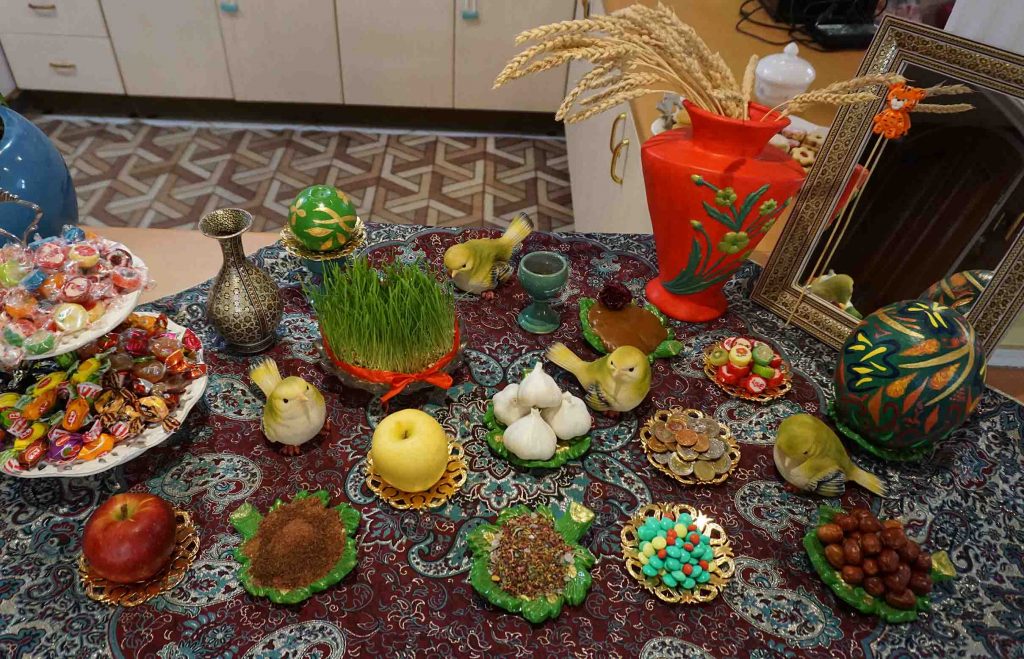
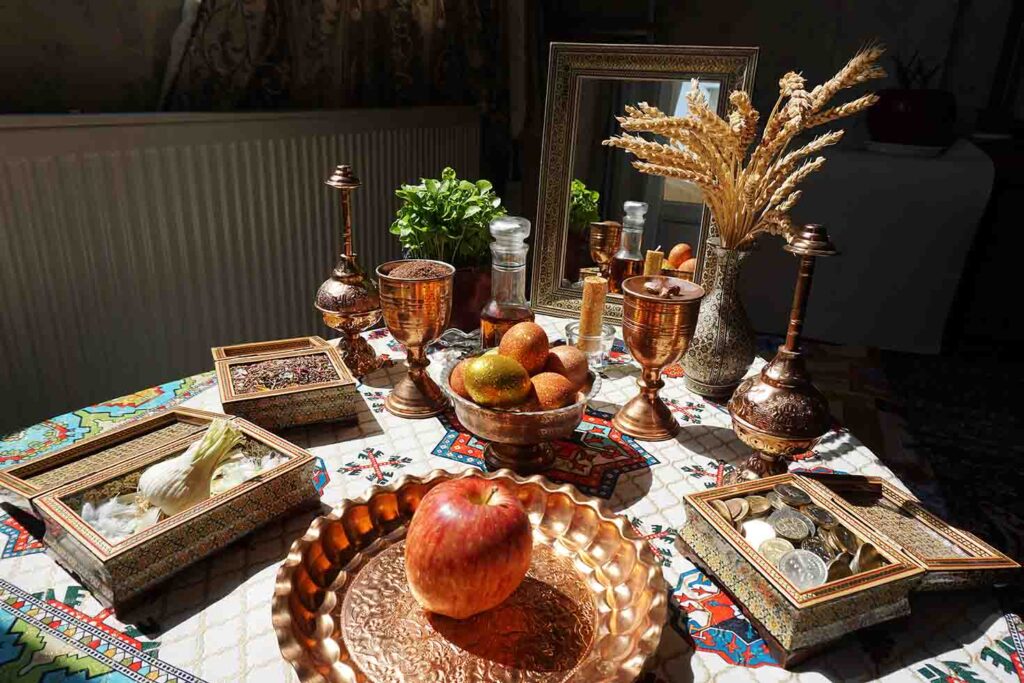
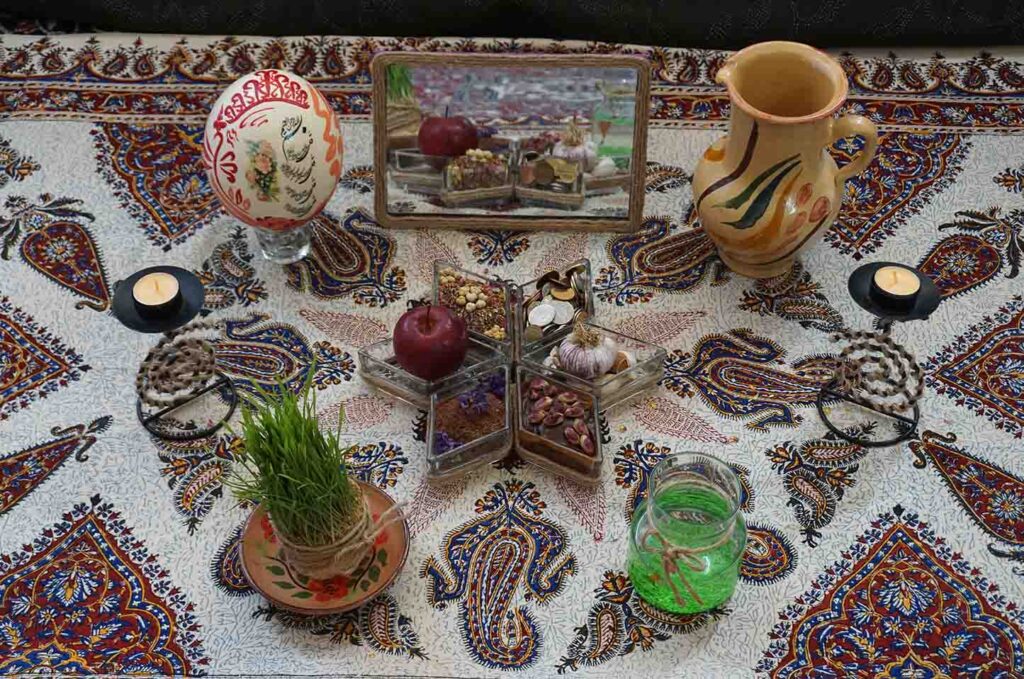
Nowruz word means new day and refers to our new year which is calculated based on the solar calendar. Photos here show my 7-seen tables in different years. It is customary to have a table with 7 elements of apple, vinegar, sumac, green-grown sprouts, Oleaster, Samanu, and garlic and each of them is a symbol for a quality like health, growth and wealth. Persian name of these words start with “S” and s alphabet in Persian is called “seen”. It is believed that each of these elements brings its own type of good vibe for the rest of the year.
Each family designs this table in a different style, so you can imagine a country with millions of types of 7-seen tables, from elaborate ones to very simple ones. Dates in photo captions are solar dates, the system officially used in the Iranian calendar. I took these photos at the same place they were located in the house to convey the feeling of normal house decoration.